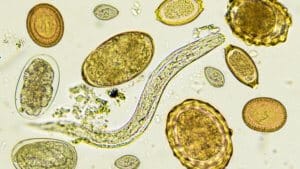The difference between Celiac disease and gluten intolerance and sensitivity

The difference between Celiac disease and gluten intolerance and sensitivity
There has been a rise the number of people who are choosing to live a gluten-free lifestyle but there is still some confusion around the reasons for their choice and varying severity of their symptoms. Reactions to gluten are varied and not all point to an allergy or adverse outcome.
Celiac disease, non-celiac gluten sensitivity and gluten intolerance are all conditions that are affected by the ingestion of gluten. While similar in their condition, there are distinct differences in each and how to treat them.
Firstly, what is gluten?
Gluten is a type of protein found in certain grains including wheat, (wheatberries, durum, emmer, semolina, spelt, farina, farro, graham, KAMUT, khorasan wheat and einkorn), barley, rye and triticale – a cross between wheat and rye.
It plays a role in binding grain-based ingredients together in recipes, and it gives bread its spongy texture and helps foods maintain their shape.
Gluten can be found in many types of foods, even ones that would not be expected, including: (1)
- Beer, ale and lagers
- Bouillon cubes
- Brown rice syrup
- Candy
- Chips
- Couscous
- Deli meats
- Flavoured coffees and teas
- French fries
- Gravy
- Hot dogs, salami and sausage
- Ice creams and gelato
- Meat substitutes
- Oats
- Rice mixes
- Sauces
- Seasoned tortilla chips
- Soups
- Soy sauce
- Vegetables in sauce
Most people can tolerate gluten with no adverse effects. However, it can cause problems for people with certain health conditions.
Coeliac disease affects approximately one in 70 Australians.(2) Another seven per cent of the population reports being gluten intolerant, suffering from bloating and cramping when ingesting foods containing wheat, rye and barley, among other grains.(3)
Gluten sensitivity and intolerance
What is gluten sensitivity or intolerance?
Approximately one in 20 people do not test positive for celiac disease but still react negatively to gluten. This condition is called non-celiac gluten sensitivity or gluten intolerance.
Symptoms of gluten intolerance
Many symptoms are similar to celiac disease, however, gluten sensitivity doesn’t cause an immune response or intestinal damage.
Symptoms can include:
- Abdominal pain
- Bloating
- Altered bowel function
- Fatigue
- Headache
- Joint or bone pain
- Mood disorders
- Skin manifestations such as rash or eczema
These symptoms may occur within hours to days following ingestion of gluten and reportedly dissipate upon the withdrawal of gluten.(4)
Why are people gluten intolerant?
Although we are still a long way off completely understanding the causes of gluten sensitivity, it is possible that FODMAPs, a group of sugars that are not completely digested or absorbed in our intestines, may be the culprit. When FODMAPs reach the small intestine, they move slowly, attracting water. When they pass into the large intestine, FODMAPs are fermented by gut bacteria, producing gas as a result. The extra gas and water cause the intestinal wall to stretch and expand.(5)
The quantity of gluten, which is much higher in processed foods and current strains of wheat, may also be the cause.
Thirdly, we should consider chemicals that are sprayed onto the foods we eat. Pesticides, insecticides and herbicides are known to damage our GI tract and immune system. This may cause a sensitivity to gluten that we may otherwise be able to handle.
How to treat gluten sensitivity or intolerance
Gluten intolerances or sensitivities that are not diagnosed as Celiac Disease are treatable and can often be fixed.
Firstly, a series of tests will be performed to identify the foods that you are sensitive to and then a specific dietary regimen will be designed to help you rotate through foods that are known to not cause a reaction for you.
You also may be recommended supplements to help heal the GI tract. Once you normalize the barrier between your food and your immune system, the IgG antibodies that were causing issues will breakdown and eventually be recycled back into the body. Your Functional Medicine health practitioner will reintroduce certain foods back into your diet to ascertain if which, if any, foods are affecting you negatively.
Celiac disease
What is celiac disease?
Celiac disease is the most severe form of gluten intolerance for which there is no cure currently. It is a digestive and autoimmune disorder in which gluten proteins cause inflammation and damage to the small intestine. The body’s immune system attacks the lining of the small intestine, which is responsible for absorbing nutrients.
When the body isn’t able to absorb nutrients from food, the person can suffer from malnutrition. “It results in marked disruption of normal gut tissue structure, including atrophy of epithelial cell projections called villi and an enlargement of intestinal crypts where new epithelial cells form from stem cells.”(6)
Celiac disease affects about one in 150 people and tends to run in families. People who are diagnosed with celiac disease are at risk of developing another autoimmune disorder due to their underlying inflammatory reactions to gluten that cause health problems within the gut microbiome, brain, endocrine system, stomach, liver, blood vessels, smooth muscle and even the nuclei of cells.
This diseases celiac patients are at a higher risk for include:
- Anaemia
- Type I diabetes
- Multiple sclerosis (MS)
- Dermatitis herpetiformis (an itchy skin rash)
- Osteoporosis
- Infertility and miscarriage
- Neurological conditions like epilepsy and migraines
- Intestinal cancers
- Growth issues in children due to poor nutrient absorption(7)
What are the symptoms of celiac disease?
Many people don’t experience noticeable symptoms early on, and even when signs emerge, these may not give accurate information about the disease and its severity.
Common symptoms include:
- Digestive discomfort
- Tissue damage in the small intestines
- Diarrhea
- Nausea
- Vomiting
- Changes in mood, such an anxiety and depression
- Unexplained weight loss
- Foul-smelling faeces
- Blistering skin rash
- Sleep disturbances including insomnia
- Chronic fatigue or lethargy
- Nutrient deficiencies (malnutrition) due to absorption problems within the digestive tract
- Chronic headaches
- Joint or bone pains
- Tingling numbness in the hands and feet
- Seizures
- Irregular periods, infertility or recurrent miscarriage
- Canker sores inside the mouth
- Thinning hair and dull skin
Diagnosis of celiac disease
Many people with celiac disease don’t know they have it. Two blood tests can help diagnose it:
- Serology testing looks for antibodies in your blood. Elevated levels of certain antibody proteins indicate an immune reaction to gluten.
- Genetic testing for human leukocyte antigens (HLA-DQ2 and HLA-DQ8) can be used to rule out celiac disease. (8)
Gluten and “leaky gut”
The lining of our gut is meant to be strong and tight so that it can keep food, waste and microbes inside the digestive tract.
“Gluten has been found to negatively impact the lining of the gut, creating “leaky gut” or intestinal permeability, even in those who do not have celiac disease. Gluten can cause the release of an inflammatory protein called zonulin, which opens up the junctions in the lining of the gut and causes gaps, allowing particles to leak into the bloodstream (where they don’t belong) and creating an immune response. This sets the stage for systemic inflammation.” (9)
Gluten does activate zonulin, but it does not affect everyone the same way. Gluten does increase intestinal permeability in those with celiac disease and possibly in those with IBS. However, it appears that gluten does not increase intestinal permeability in healthy people.
What is the treatment for celiac disease?
People diagnosed with the celiac disease must follow a strict gluten-free diet to improve symptoms and avoid long-term complications. (10)
There are now many gluten-free food options on our supermarket shelves but many of these are processed foods. It’s important to not only eat gluten-free, but to make healthy gluten-free choices. There are many healthy alternatives to gluten, including quinoa, brown rice, amaranth, millet and buckwheat.
Other ways to treat celiac disease include incorporating dense fresh foods into your daily diet, healing the gut through probiotics and fermented foods, supplementing with digestive enzymes and managing stress as celiac disease is extremely responsive to stress.
The following foods are thought to boost immune function and reduce symptoms associated with celiac disease:
- Salmon – Rich in omega-3 fatty acids, which help reduce inflammation and are thought to be protective against many types of cancers. Salmon is also rich in selenium, tryptophan and vitamin D.
- Brown rice – Excellent source of manganese, selenium, magnesium and fiber.
- Shiitake mushrooms – These mushrooms are not only delicious but are rich in a compound called lentinan which boosts immune function. They are also high in antioxidants and iron.
- Beetroot – Good source of antioxidants; rich in folate, manganese, and potassium.
- Spinach – Calorie for calorie, spinach is a powerhouse. It’s packed with vitamins K, A, and C, manganese, folate and iron.
- Dark Chocolate (gluten-free) – Very high in protective antioxidants. It is also rich in magnesium, iron, and vitamin D. (11)
How we can help
At Advanced Functional Medicine, through consultation and testing, our qualified, experienced practitioners will help you find out if you have a gluten intolerance or coeliac disease, or if the integrity of your gut is the major contributor to your food intolerances.
We advise in diet and lifestyle measures as well as use targeted supplementation to repair and regenerate the intestinal lining, gut microbiota and gastrointestinal tract function.




